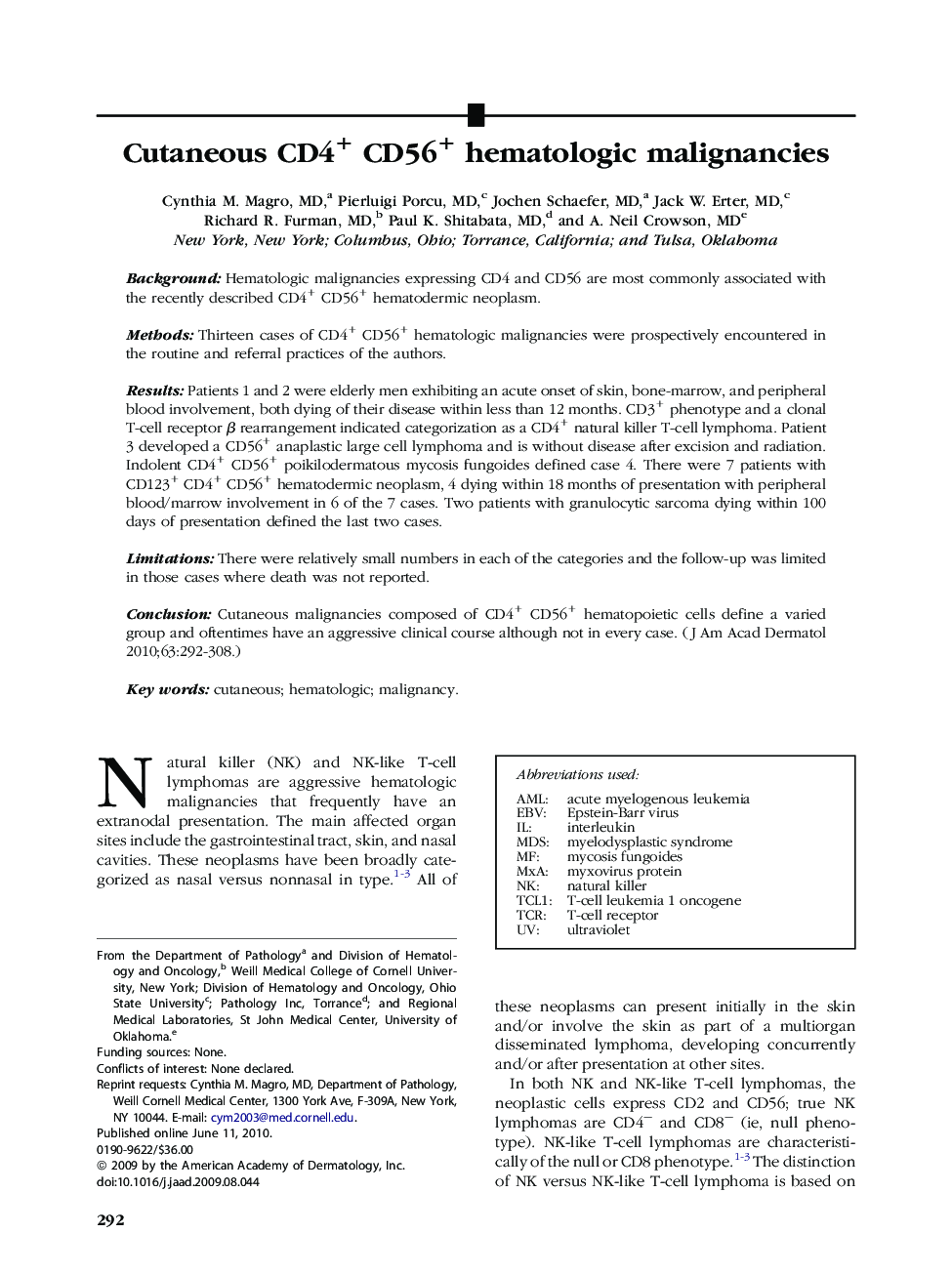| Article ID | Journal | Published Year | Pages | File Type |
|---|---|---|---|---|
| 3208340 | Journal of the American Academy of Dermatology | 2010 | 17 Pages |
BackgroundHematologic malignancies expressing CD4 and CD56 are most commonly associated with the recently described CD4+ CD56+ hematodermic neoplasm.MethodsThirteen cases of CD4+ CD56+ hematologic malignancies were prospectively encountered in the routine and referral practices of the authors.ResultsPatients 1 and 2 were elderly men exhibiting an acute onset of skin, bone-marrow, and peripheral blood involvement, both dying of their disease within less than 12 months. CD3+ phenotype and a clonal T-cell receptor β rearrangement indicated categorization as a CD4+ natural killer T-cell lymphoma. Patient 3 developed a CD56+ anaplastic large cell lymphoma and is without disease after excision and radiation. Indolent CD4+ CD56+ poikilodermatous mycosis fungoides defined case 4. There were 7 patients with CD123+ CD4+ CD56+ hematodermic neoplasm, 4 dying within 18 months of presentation with peripheral blood/marrow involvement in 6 of the 7 cases. Two patients with granulocytic sarcoma dying within 100 days of presentation defined the last two cases.LimitationsThere were relatively small numbers in each of the categories and the follow-up was limited in those cases where death was not reported.ConclusionCutaneous malignancies composed of CD4+ CD56+ hematopoietic cells define a varied group and oftentimes have an aggressive clinical course although not in every case.
